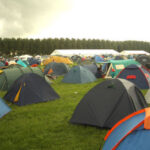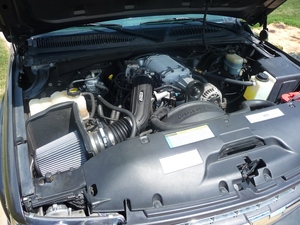I love to go camping. Tents from days gone by used to last for years- not so anymore. Of course, even the best tents eventually give in to the wind, rain, sun, etc.
Replacing tents can be an expensive measure, but not if you build your own from PVC.
Make the following tents quickly and easily with outdoor rated fabric from your fabric store, or fabric you have on hand (like denim) and cover with waterproofing.
Paint, dye or stain your PVC poles for a custom look. Cover them with a UV sealant to preserve them for years. People will wonder where you got your beautiful tent, and you could, perhaps- if the price was right, make a few for friends and family as gifts. Perhaps. Or teach them to make their own. And not borrow yours.
This tent is based on a Kelty- style tent, but with variations- not the least of which is the price.
For all tents, you will need:
Each tent will give additional specific fittings and materials.
• PVC Pipe- I like to use ½” Schedule 40 PVC- this is lightweight, and stronger because it’s made to withstand water pressure.
• PVC fittings- available in DIY stores and some fittings are available online
• Sandpaper to remove rough cut edges after cutting pipes or drilling
• Paint, dye or stain if desired
• Hacksaw or PVC pipe cutter
• Measuring tape
PVC Tent – for one or two people
You will also need:
• Four each ½” diameter PVC pipes, each 10 feet long, cut to eight feet- do not discard the scraps.
• Four each 1-foot long pieces of rebar
• Mallet or hammer
• Drill and ¼”bits
• Drilling jig- make one using information at this link.
• This frame is based on the Kelty style tent. It’s a little different.
• Four each carriage bolts, ¼” diameter and 1 ½” long
• Four each cap bolts, ¼”
• Eight each ¼” washers
• Tarp for floor- 6′ by 6′ square.
• Cord for tying tarp down.
• Tent stakes for making wind ring.
• Large tarp for covering tent- also use canvas, denim, etc.
Insert one end of each pipe into a cross fitting. This will give you a giant plus sign. Using a jig, drill a hole through the cross fitting all the way through the pipe.
Thread a washer onto a carriage bolt and push the bolt through the hole, cover with another washer, and thread on the bolt. Tighten only finger tight. This keeps the poles from coming undone in a strong wind. Place the cap nut on the end.
Measure a spot on the ground 6 feet square. Drive a piece of rebar six inches into the ground at each corner and insert an end of the PVC pipe at each corner. It may be hard at first to bend the pipe. You can also work in the other direction- place the stakes first, insert the poles, and then bend towards the center.
Cover with tarp and lay out the floor. Secure the floor tarp to the corner stakes, and secure the tarp outside to the ground through grommets or ties. Make any kind of tent door or closing you desire.
To make the wind ring, measure 1/3 of the way down the top of the tent. Tie or use rope clamps to make a rope ring. Tie four ropes to the ring, one for each side of the tent. You can use eye snaps, metal rings, etc. Using the tent stakes, tie the ropes down securely, but not so tight the PVC cracks. This will ensure the tent does not blow over in a strong wind.
For a larger tent, leave the poles full length and make your square larger. Keep in mind, that PVC will bend, but only so far. It may help to angle your rebar in a little. The wind ring will help keep your tent secure.
For a large tent, add four poles to the inside.
1. While the 10-foot poles are on the ground, measure four feet from the end of each cross piece (with the poles inserted), and make a mark. Make certain your measurements are correct.
2. Cut the pipes and insert a four-way fitting (available online) into each end. The sides should point to the inside of the tent.
3. Erect the tent, and measure from one four-way fitting to the next. Add 2″ to this measurement for insertion into the fittings. Cut the pipes, and work them into the fittings. You will now have a cross at the top, and crossbars for added strength. Your wind ring should ride about a foot above the cross bars.
4. You can indeed add a tee fitting to each cross bar, and insert an additional pole to the ground. This gives the larger sides more structure, and makes the tent sturdier.
5. Although it isn’t necessary, you can drill and bolt these attachments.
6. You can experiment with longer PVC pipes, and additional cross bars and side poles. Fancier looks cooler, but will cost more and weigh more to carry. Of course, you could probably fit more people in it.
7. For anything larger than 10′ square, I would build a yurt or other structure. See the following link for a free downloadable plan.
Make a bag or use a dedicated box to carry all the fittings, bolts, etc.
Use stands for lights and do not hang anything from the poles of this tent. It is made to keep the tarp or tent cover up. I wouldn’t hang more than one or two 1-lb. battery lights inside the 6′ square tent.
Enjoy your custom tent all season long. Your tent poles may be cut shorter, and attached together at the campsite using connectors. These are available at any DIY store.
Here is a list of PVC suppliers for pipes, fittings and more ideas:
http://www.pvcplans.com/pvc-suppliers.htm
http://pvcfittings.com/
http://www.pvcfittingsdirect.com/
http://www.cle http://www.clearpvcpipe.com/ arpvcpipe.com/
http://www.homedepot.com
http://www.lowes.com
http://formufit.com/ furniture fittings
http://www.usplastic.com/catalog/item.aspx?itemid=24673&catid;=904 colored pvc, casters and inserts,
http://www.vintagewoodworks.com/azekbeadboard.html PVC mouldings, regular, fancy and vintage
For ideas on building other camping gear, visit this site:
http://www.knowledgehound.com/topics/hikecamp.htm#temporary
Source: The author of this article has over 40 years of experience in diverse forms of DIY, home improvement and repair, crafting, designing, and building furniture, outdoor projects and more.


